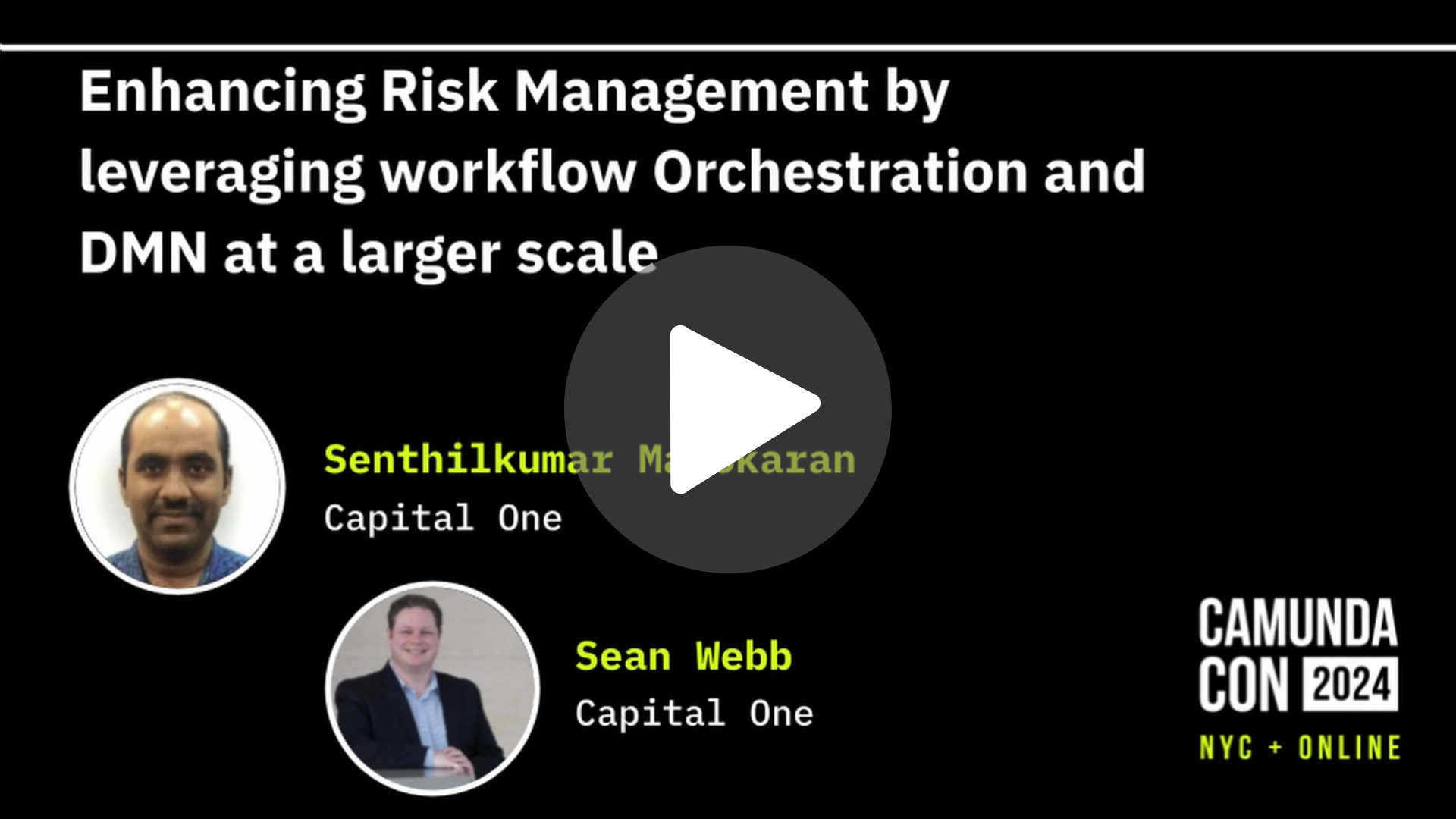

Capital One, a powerhouse in credit cards, auto loans, banking, and savings, embarked on a transformative journey in 2014 to modernize its risk management component. Spearheaded by seasoned product manager Sean Webb and application architect Senthilkumar Manokaran, the initiative aimed to centralize the inherently decentralized discipline of risk management. The adoption of Camunda Modeler was pivotal in orchestrating this shift, allowing the risk management team to share, create, and organize Business Process Model and Notation (BPMN) process models and DMN decision tables with remarkable efficiency.
As a financial leader serving over 100 million customers, Capital One’s strategic pivot toward technology was marked by becoming the first bank to migrate entirely to the cloud in 2016. This tech-forward identity was further reinforced as they exited all data centers by 2020. Capital One’s journey wasn’t just about upgrading technology; it entailed reshaping culture and practices within the organization.
The path to modernization was not devoid of challenges. The team learned the need for templates and standards for process models to avoid discrepancies and the need for extensive documentation to enable self-service for tenant teams. Data retention policies and a robust governance framework were also crucial in managing data accumulation.
The selection of Camunda was a strategic move to meet Capital One’s rigorous demands for process and task management, decision management, and optimization capabilities. Camunda’s Modeler stood out for its ability to provide a collaboration tool for various teams within the organization, from assessors to auditors, fostering a shared responsibility model that allowed independent teams to build and deploy their processes.
The journey began with establishing core risk management activities, which expanded to centralizing processes and rules for quick, consistent decision-making. Camunda Modeler has significantly reduced Capital One’s time from model to implementation.
“It’s great that we can directly collaborate on the model itself, live, and adjust these things quickly. We’ve had testing sessions where we’re testing our product, and we find rules that aren’t functioning the way that we thought they would, then made the change in the DMN table so quickly that we had it fixed by the end of the testing session. Then we’re able to retest it, right there!”
– Sean Webb, Product Manager, Capital One.
Camunda aligns IT with business goals, providing visibility into tech-driven outcomes. Its unified modeling allows both business leaders and developers to collaboratively create, maintain, and optimize visual process flows, helping to mitigate siloed and isolated automation and expediting implementation.
Capital One witnessed an immediate increase in speed to market and a reduction in infrastructure costs. Senthilkumar Manokaran noted,
“We noticed an instant increase in our speed to market as we started to use Camunda. And it reduces cost as well—infrastructure-wise. Now, it’s consolidated. It’s sitting in a serverless tech stack, which greatly saves our infrastructure maintenance costs.”
The adoption of Camunda by Capital One yielded several distinct benefits:
These benefits collectively contributed to a more agile, responsive, and efficient risk management function within Capital One.
Capital One’s modernization story showcases the symbiosis between technological innovation and strategic foresight. As they look to the future, with AI-powered automation and integration on the horizon, the company continues to reinforce its image as “a technology company that is also a bank,” setting a standard and trend for the entire financial industry.
More than 25 years ago, Capital One revolutionized the credit card industry with data and technology. Today, we are one of the most widely recognized brands in banking — serving more than 100 million customers across a diverse set of businesses.
Capital One was founded on the belief that no one should be locked out of the financial system. Today, our deep commitment to financial inclusion is reflected in our business, community partnerships, philanthropy, and most importantly, support for our customers. We are on a mission to change banking for good.
Camunda enables organizations to orchestrate processes across people, systems, and devices to continuously overcome complexity and increase efficiency. A common visual language enables seamless collaboration between business and IT teams to design, automate, and improve end-to-end processes with the required speed, scale, and resilience to remain competitive.
Camunda © 2025